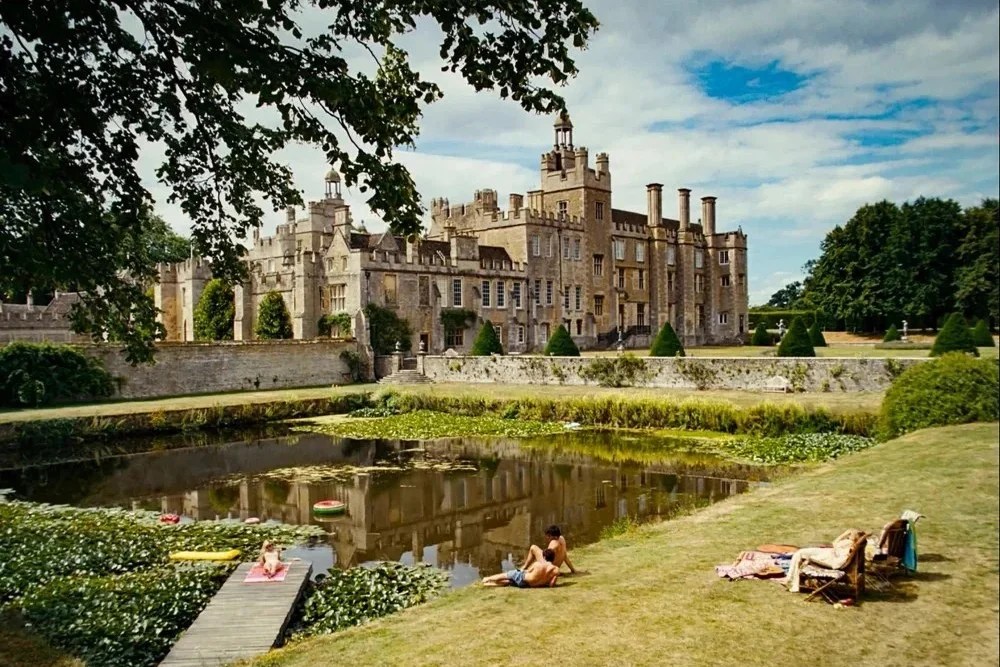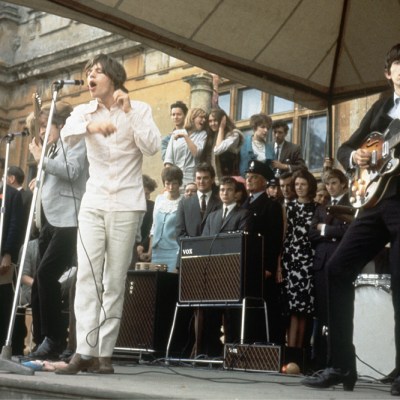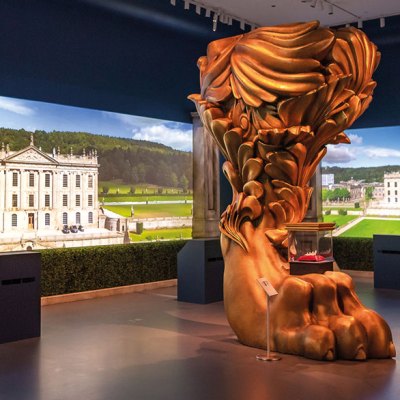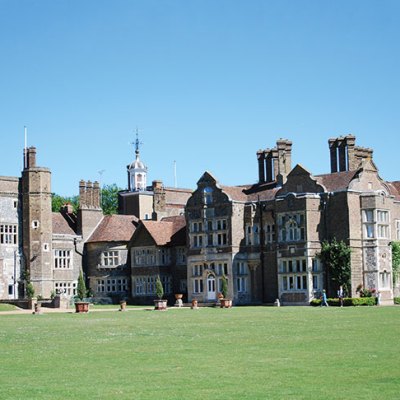From the January 2024 issue of Apollo. Preview and subscribe here.
‘We’re gonna burn this goddamn house right down,’ sings Sophie Ellis-Bextor in the concluding scene of Emerald Fennell’s film Saltburn as the protagonist dances naked through the rooms, corridors and picture galleries of Drayton House in Northamptonshire. The main character, played by the Irish actor Barry Keoghan, is an interloper – a destructive force in a landscape of continuity. It is Stephanie Barczewski’s contention in How the Country House Became English that the Englishness of the country house is rooted in its ability to absorb, deflect, or recover from a series of destructive pressures from outside its walls. Those inside may change, but the edifice remains.
 Barczewski describes her book as a product of the ‘Brexit moment’. This moment of disengaging with Europe encouraged the historian, whose work on the importance of the British Empire to the economics and the material culture of the country house rightfully occupies a prominent place on the bookshelves of academics, heritage professionals and country-house enthusiasts alike, to consider how varieties of Englishness are expressed through the architectural evolution and popular image of the country house from the Middle Ages to the mid 20th century.
Barczewski describes her book as a product of the ‘Brexit moment’. This moment of disengaging with Europe encouraged the historian, whose work on the importance of the British Empire to the economics and the material culture of the country house rightfully occupies a prominent place on the bookshelves of academics, heritage professionals and country-house enthusiasts alike, to consider how varieties of Englishness are expressed through the architectural evolution and popular image of the country house from the Middle Ages to the mid 20th century.
It is a book that explores the tensions and contradiction of English identity, as manifested in the country house, through six chapters. The first half explores the contradiction in English identity between the celebration of continuity and a reality of violent disruption. The first two chapters explore the dissolution of the monasteries and the English Civil War, glimpsed through the arrow slits of the fortified manor house, and then windows that sought to bring a bit of classical Rome to rural England. The third chapter includes another revolution, bringing William III to the throne, and the ways in which the chaos of previous centuries was fashioned into a Protestant success story through the bricks and mortar of the country house. The pivot point in her story is the French Revolution. This shock to the established order of things prompted those with their hands near the levers of social, economic and political power (country-house owners) to elevate political stability and cultural continuity as the key component of English identity. The 19th-century country house, in Barczewski’s reading, was the product of a conscious uncoupling from European architectural influences, culminating in the cottage-core of the Arts and Crafts version.
Barczewski finishes her story at Castle Drogo in Devon. Drogo ‘embodies the debate between continuity and disruption and between native and foreign which this book has found in English country-house architecture for centuries’. It is, to her mind, not an anomaly in Lutyens’ designs for country houses, but the perfect embodiment of the position of the country house at the start of the 20th century: a site of competing influences that is ‘once old and new, traditional and modern, stable and disrupted, local and continental, vernacular and cosmopolitan, metropolitan and imperial, gothic and classical’.
The book is at its best when reminding the reader of the long histories of some of these sites, and how the physical location of houses can be the product of significant acts of violence: the centuries between the Reformation and the defeat of the Jacobites in 1746 were certainly tumultuous. Petworth in West Sussex would never have been built had the Percy family not, because of their Catholicism and support for Mary, Queen of Scots, been forced to transfer their primary seat from Northumberland to Sussex by Elizabeth I. ‘Beneath its superficial stability,’ Barczewski writes, ‘lies a violent and disruptive past.’ Her assertion is borne out through quantitative data. Perhaps the most impressive contribution of this book to future studies lies buried in the book’s three appendices: ‘Extant Country Houses with Priest Holes’; ‘Monastic Sites Converted to or Used to Supply Materials for Country Houses’ and ‘Country Houses Damaged or Destroyed in the Civil War’. Each of these sections provides a portal for new research opportunities.
The Little Dining Room at Petworth House and Park, West Sussex. Photo: © National Trust Images/Andreas von Einsiedel

Unfortunately for Barczewski, however, her book is the victim of circumstance and the timelines involved in peer-reviewed publications. Reading this book in 2023, after three years of heated debate in the UK across different media as to the role, purpose and meaning of the country house – particularly those public charitable assets in the ownership of the National Trust – this work feels curiously truncated. Barczewski notes that the ‘nostalgic view of the country house has its limits’ and that ‘a visit to a country house should present no challenge to a comfortable view of history – an expectation largely created by the Trust in recent years’. To this reviewer’s mind, this work would have been immeasurably strengthened by being far more explicit about the causality implied in this statement; unpicking the links between the processes documented in the six chapters of this book, and the thoughts, worldview and approaches of those curators and property managers who so successfully created the cream-tea country-house visitor experience between the Second World War and the Second Iraq War.
Perhaps Lutyens has the answer. Castle Drogo is no longer the only Lutyens house owned by the National Trust. Last spring the Trust announced its purchase of Munstead Wood. This house and its gardens designed by Gertrude Jekyll will not be able to sustain the huge visitor numbers that characterise the booming country-house sector. Rather, it could become a place of experimentation: celebrating and conserving the historic fabric both inside and outside the house, while using the building and its landscape to think about the contradictions at play in ideas of Englishness. Since Barczewski’s book charts those contradictions over the course of 500 years, it had better be in the gift shop.
How the Country House Became English by Stephanie Barczewski is published by Reaktion Books.
From the January 2024 issue of Apollo. Preview and subscribe here.



